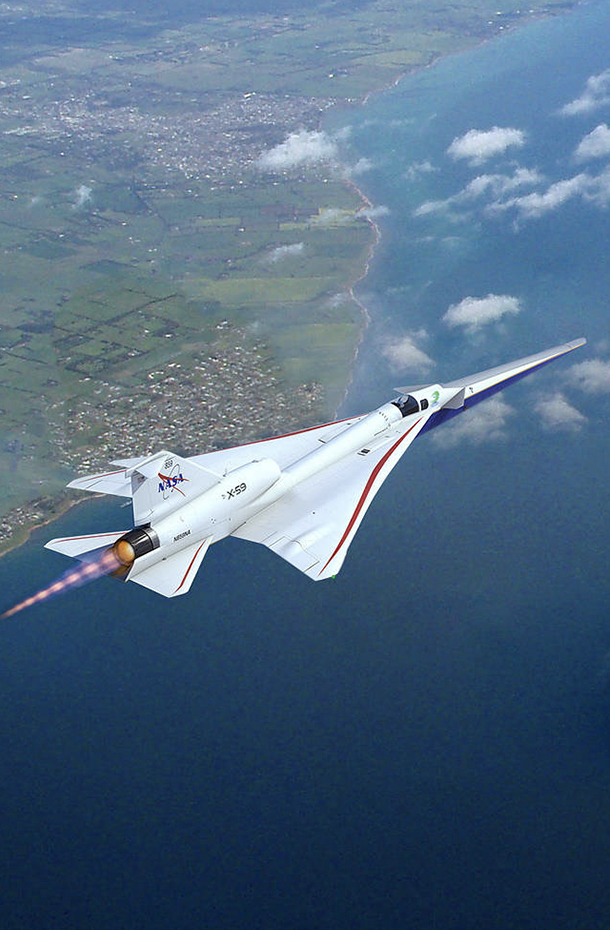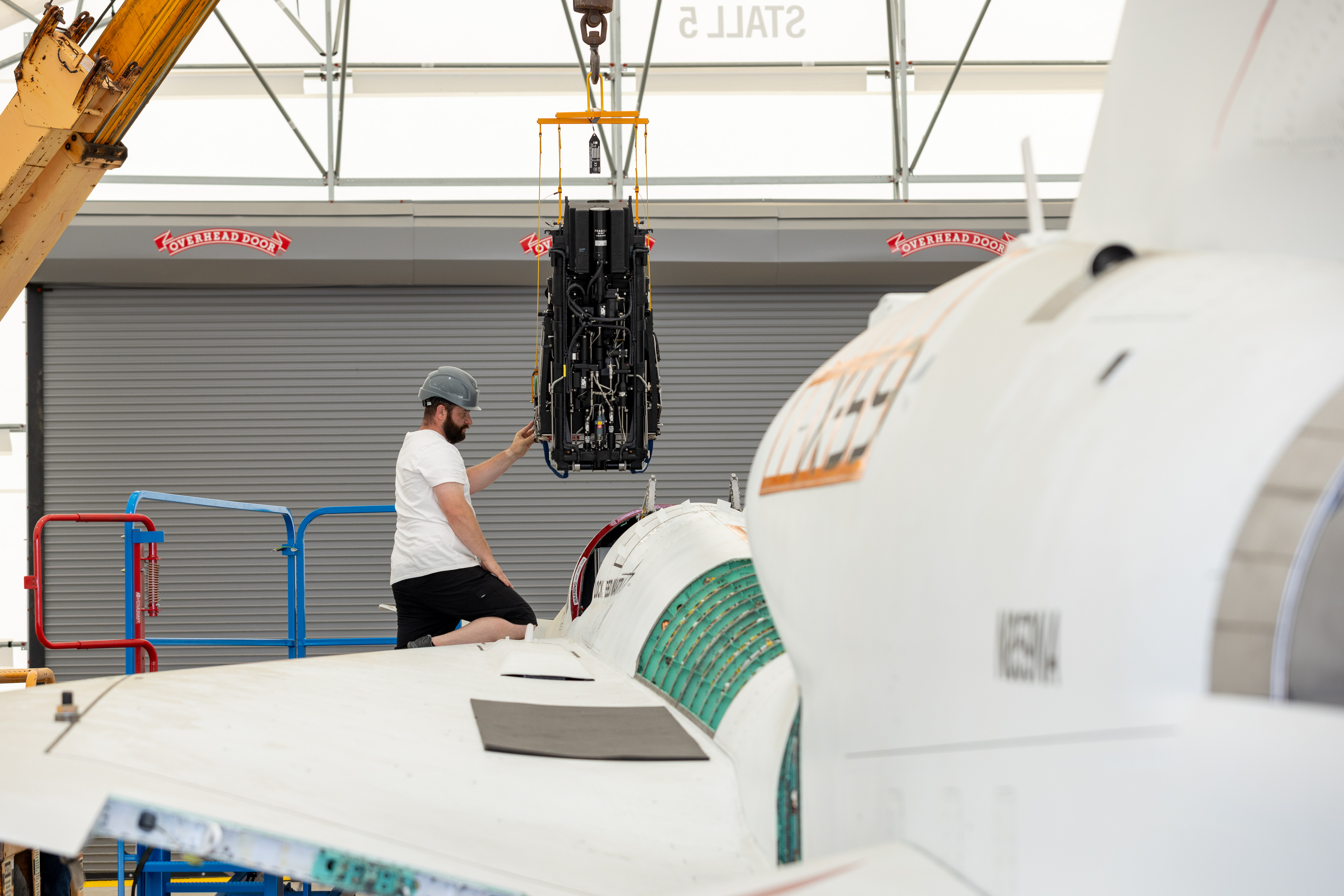3 min read
Preparations for Next Moonwalk Simulations Underway (and Underwater)  NASA Life Support Technician Mathew Sechler provides support as the X-59’s ejection seat is installed into the aircraft at Lockheed Martin Skunk Works’ facilities in Palmdale, California. Completion of the seat’s installation marks an integration milestone for the aircraft as it prepares for final ground tests.Lockheed Martin The team preparing NASA’s X-59 continues through testing in preparation for the quiet supersonic aircraft to make its first flight. This includes a trio of important structural tests and critical inspections on the path to flight.
NASA Life Support Technician Mathew Sechler provides support as the X-59’s ejection seat is installed into the aircraft at Lockheed Martin Skunk Works’ facilities in Palmdale, California. Completion of the seat’s installation marks an integration milestone for the aircraft as it prepares for final ground tests.Lockheed Martin The team preparing NASA’s X-59 continues through testing in preparation for the quiet supersonic aircraft to make its first flight. This includes a trio of important structural tests and critical inspections on the path to flight.
The X-59 is an experimental plane that will fly faster than the speed of sound without a loud sonic boom. It will be the first of its kind to fly, with the goal of gathering sound data for NASA’s Quesst mission, which could open the door to commercial supersonic overland flight in the future.
Because of its unique design, the X-59’s engineering team must do all it can to predict every aspect of it before it ever takes off, including how its fuselage, wings, and the control surfaces will behave together in flight. That means testing on the ground to give the team the data it needs to validate the models they’ve developed.
“The testing not only tells us how structurally sound the aircraft is, but also what kind of forces it can take once it is in the air.  WALT SILVA
WALT SILVA
Senior Research Scientist at NASA Langley Research Center in Hampton, Virginia, who serves as structures lead for the X-59.
The X-59’s structural tests provide the team with valuable feedback. From 2022 to –2024 the engineers collected data on the forces that the aircraft will experience in flight and the potential effects of vibrations on the plane.
“You do these tests, you get the data, and things compare well in some areas and in other areas you want to improve them,” Silva said. “So, you figure that all out and then you work towards making it better.”
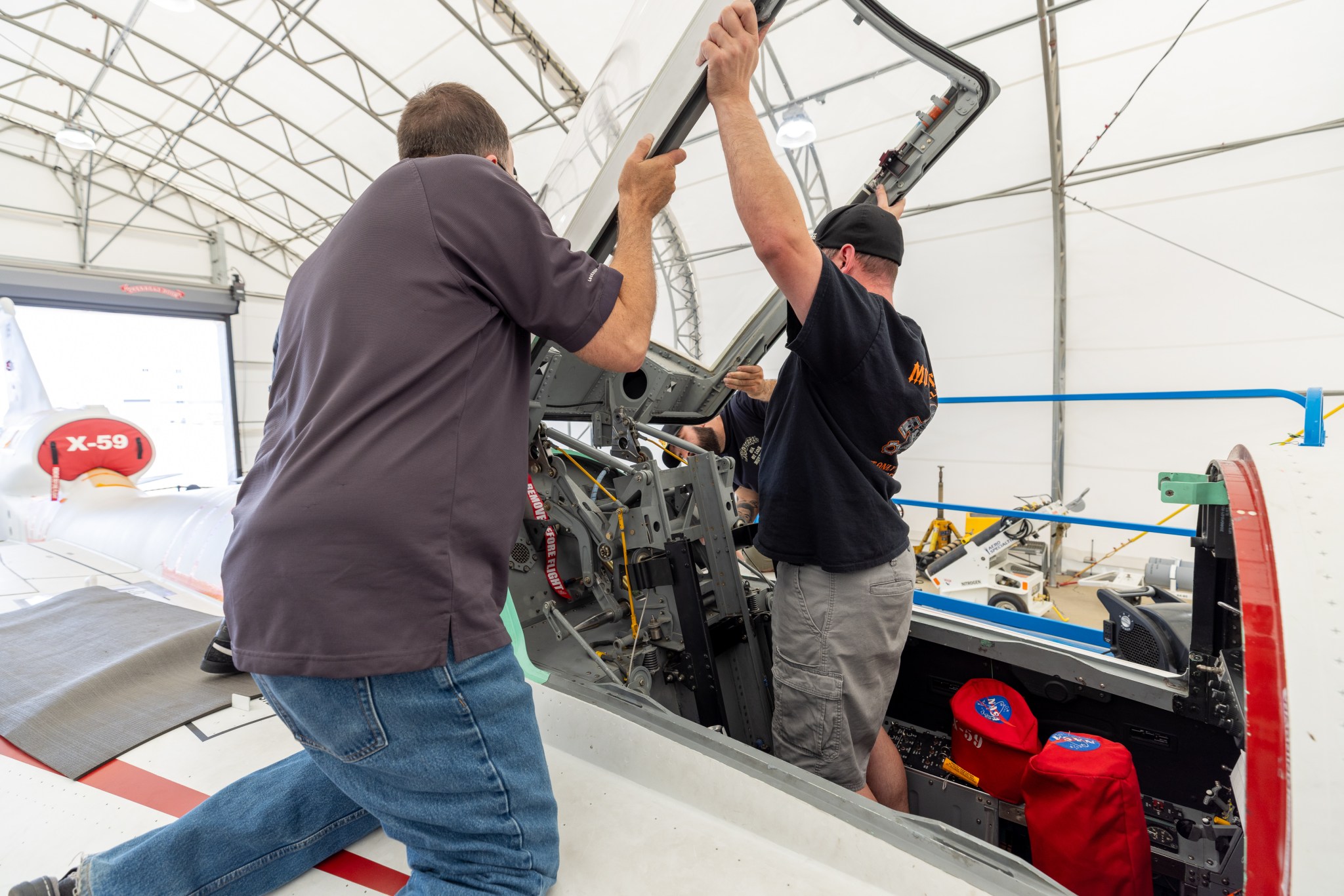 Lockheed Martin technicians temporarily remove the canopy from the X-59 in preparation for final installation of the ejection seat into the aircraft. Lockheed Martin Earlier this year, the X-59 underwent structural coupling tests that saw its control surfaces, including its ailerons, flaps and rudder, moved by computer. It was the last of three vital structural tests. In 2023, engineers applied “shakers” to parts of the plane to evaluate its response to vibrations, and in early 2022 they conducted a proof test to ensure the aircraft would absorb the forces it will experience during flight. This year the X-59 ejection seat was installed and passed inspection. The ejection seat is an additional safety measure that is critical for pilot safety during all aspects of flight.
Lockheed Martin technicians temporarily remove the canopy from the X-59 in preparation for final installation of the ejection seat into the aircraft. Lockheed Martin Earlier this year, the X-59 underwent structural coupling tests that saw its control surfaces, including its ailerons, flaps and rudder, moved by computer. It was the last of three vital structural tests. In 2023, engineers applied “shakers” to parts of the plane to evaluate its response to vibrations, and in early 2022 they conducted a proof test to ensure the aircraft would absorb the forces it will experience during flight. This year the X-59 ejection seat was installed and passed inspection. The ejection seat is an additional safety measure that is critical for pilot safety during all aspects of flight.
With structural tests and ejection seat installation complete, the aircraft will advance toward a new milestone, starting up its engines for a series of test runs on the ground.
Also ahead for the X-59 is testing the airplane’s avionics and extensive wiring for potential electromagnetic interference, imitating flight conditions in a ground test environment, and finally, completing taxi tests to validate ground mobility before first flight.
“First flights are always very intense,” said Natalie Spivey, aerospace engineer at NASA’s Armstrong Flight Research Center in Edwards, California. “There’s lots of anticipation, but we’re ready to get there and see how the aircraft responds in the air. It’ll be very exciting.”
Facebook logo @NASA@NASAaero@NASA_es @NASA@NASAaero@NASA_es Instagram logo @NASA@NASAaero@NASA_es Linkedin logo @NASA
Keep Exploring Discover More Topics From NASA Missions


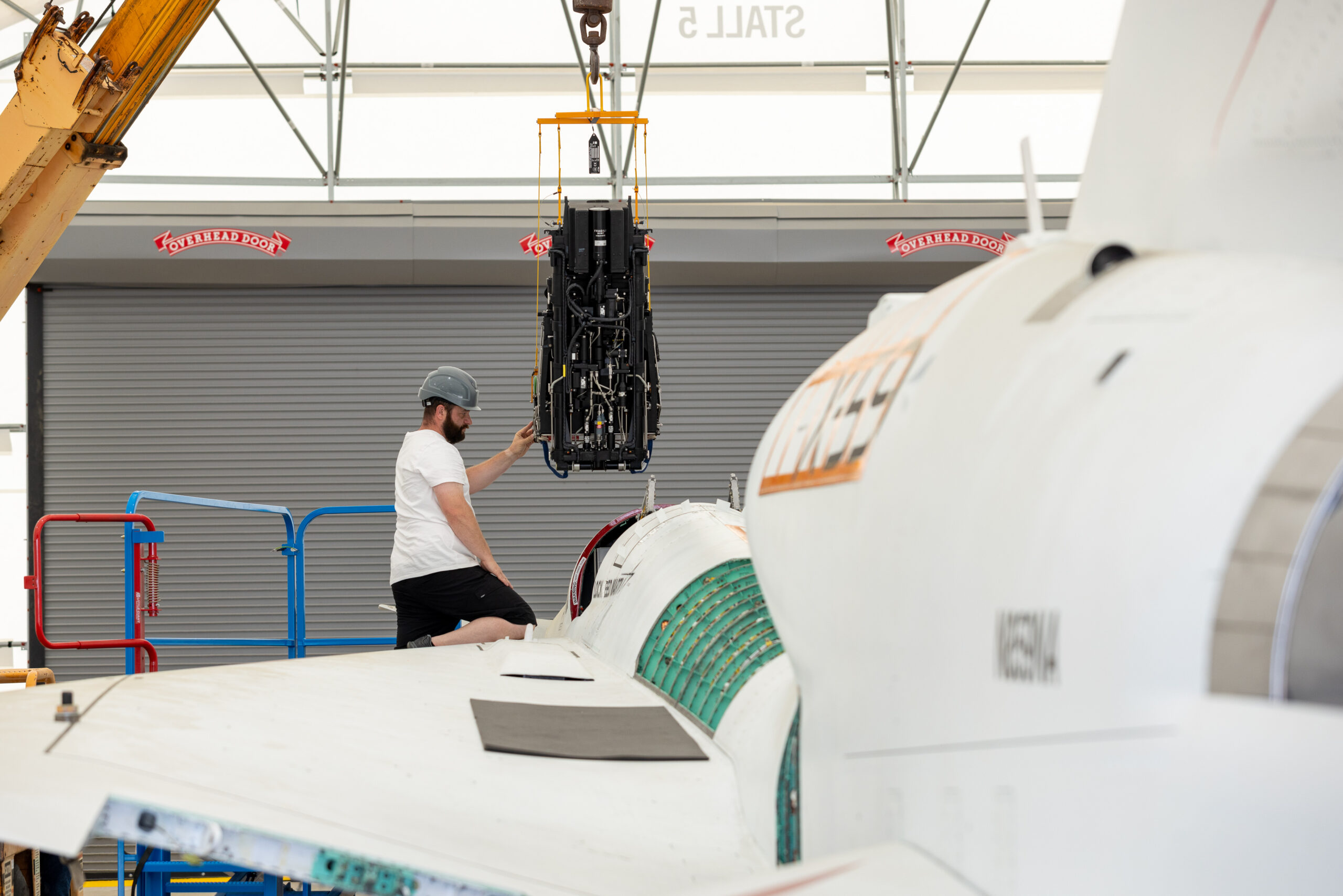
 2 min read Automated Technology Developed at Glenn Launches to Space Article 51 mins ago
2 min read Automated Technology Developed at Glenn Launches to Space Article 51 mins ago 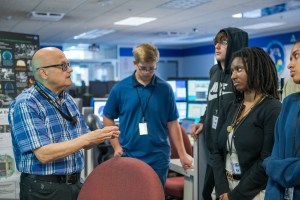 1 min read Cleveland High School Students Land STEM Career Exploration Experience Article 52 mins ago
1 min read Cleveland High School Students Land STEM Career Exploration Experience Article 52 mins ago  1 min read NASA Lands at National Cherry Festival Article 52 mins ago
1 min read NASA Lands at National Cherry Festival Article 52 mins ago 

